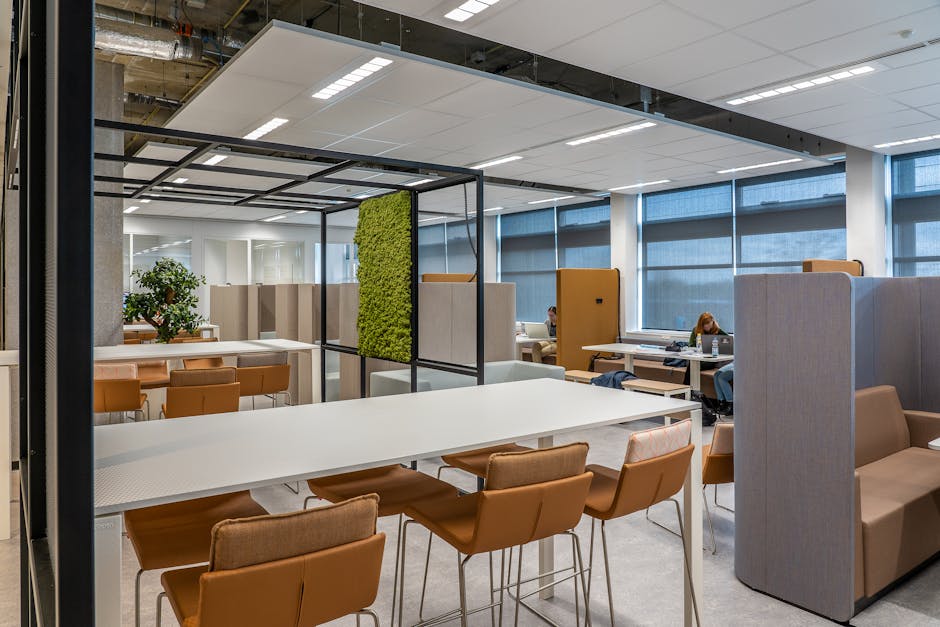Maximizing Productivity: The Art of Office Space Management
“In today's dynamic work environment, office space management has become crucial for business success. This article explores the benefits of strategic workplace design, discusses key elements of effective space utilization, and provides insights on creating an ideal office layout that caters to diverse work styles and enhances productivity. ”

In the ever-evolving landscape of modern work, office space management has emerged as a critical factor in driving productivity and employee satisfaction. As businesses navigate the challenges of hybrid work models and changing workplace expectations, the need for strategic space utilization has never been more pressing. This article delves into the art of office space management, exploring its benefits and providing actionable insights for creating an ideal workplace environment.

The Power of Effective Office Space Management
Effective workplace space management goes beyond simply arranging desks and chairs. It's about creating an environment that fosters productivity, collaboration, and employee well-being. Here are some key benefits of implementing a thoughtful office space management strategy:
1. Enhanced Productivity
A well-designed office space can significantly boost productivity by providing employees with the right tools and environments for different types of work. From quiet zones for focused tasks to collaborative areas for team projects, a diverse range of spaces allows employees to choose the setting that best suits their current needs.
2. Improved Employee Satisfaction
When employees have access to comfortable, functional, and aesthetically pleasing workspaces, their job satisfaction tends to increase. This can lead to higher retention rates and a more positive company culture.
3. Optimized Space Utilization
Effective space management helps businesses make the most of their available square footage. By analyzing usage patterns and implementing flexible solutions, companies can reduce waste and potentially lower real estate costs.
4. Facilitated Collaboration
Strategic office layouts can encourage spontaneous interactions and foster collaboration among team members. This can lead to increased innovation and knowledge sharing within the organization.
Creating an Ideal Office Space Layout
To maximize the benefits of office space management, consider the following strategies when designing your workplace:
1. Embrace Flexibility
In the era of hybrid work, flexibility is key. Create a mix of spaces that cater to different work styles and tasks, including:
- Open collaborative areas
- Private focus rooms
- Bookable meeting rooms
- Casual breakout spaces

2. Prioritize Employee Well-being
Incorporate elements that promote physical and mental health, such as:
- Ergonomic furniture
- Natural lighting
- Indoor plants
- Quiet relaxation areas
3. Leverage Technology
Implement workplace management solutions to streamline space utilization:
- Desk booking systems
- Room reservation platforms
- Occupancy sensors
- Digital wayfinding tools
4. Foster Community
Design spaces that encourage social interaction and team building:
- Communal kitchens or cafes
- Game rooms or recreational areas
- Outdoor spaces (if possible)
5. Accommodate Diverse Work Styles
Recognize that different employees have different preferences and needs:
- Provide a mix of open and enclosed workspaces
- Offer standing desks and alternative seating options
- Create zones for both collaborative and individual work
Implementing Effective Office Space Management
To successfully implement a new office space management strategy, consider the following steps:
-
Assess Current Usage: Analyze how your existing space is being utilized and identify areas for improvement.
-
Gather Employee Feedback: Survey your team to understand their preferences and pain points with the current office layout.
-
Develop a Flexible Plan: Create a space plan that can adapt to changing needs and accommodate future growth.
-
Invest in the Right Tools: Choose workplace management software that aligns with your organization's needs and goals.
-
Communicate Changes: Keep employees informed about new layouts or policies to ensure a smooth transition.
-
Monitor and Adjust: Regularly collect data on space utilization and employee satisfaction to make ongoing improvements.

Conclusion
In today's competitive business landscape, effective office space management is no longer a luxury—it's a necessity. By creating a workplace that prioritizes productivity, flexibility, and employee well-being, organizations can gain a significant advantage in attracting and retaining top talent while optimizing their operational efficiency.
As you embark on your office space management journey, remember that the perfect workplace is one that evolves with your organization's needs. Stay open to feedback, embrace innovation, and continually strive to create an environment where your employees can thrive. With the right approach, your office space can become a powerful tool for driving success in the modern work era.